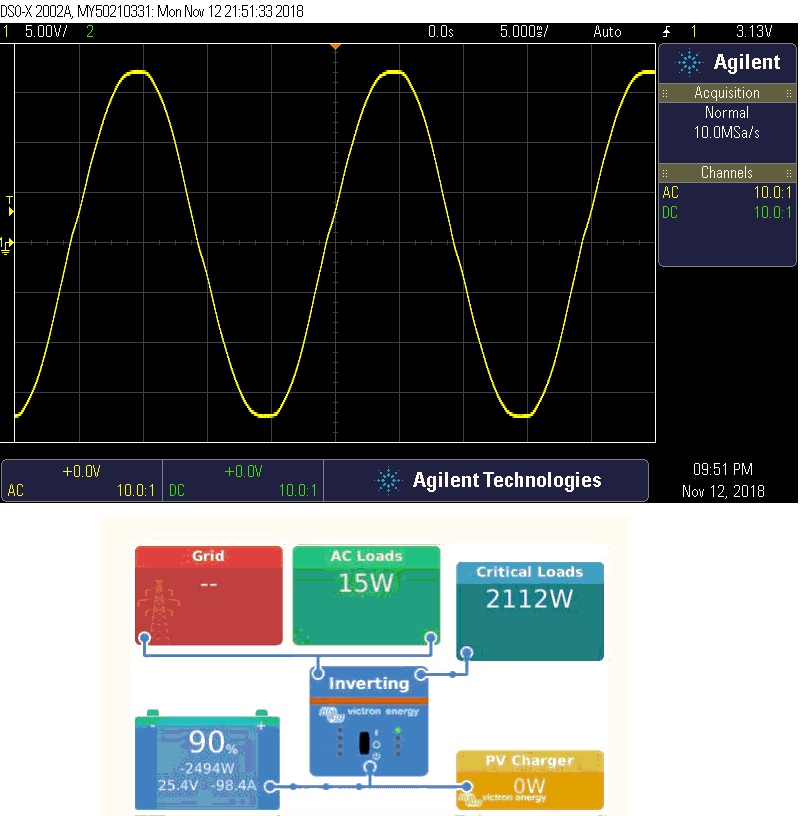Hi, @mpvader this is continuation from Disqus thread ... I want to use the Quattro to supply / protect sensitive equipment. I have 3 questions related to this:
1. There are settings in VEConfig for undervoltage and overvoltage, but no setting for frequecy tolerance - the only setting I see is to select wide range, or standard - does anyone know the tolerance +/- allowed from 50Hz before unit rejects AC input and goes into UPS mode ?
2. Anyone know the power quality of the generated sinewave when in UPS mode? Has anyone ever done a waveform capture?
3. finally is there a way to make the Quattro accept AC input to charge batteries but remain in UPS mode - i.e. to effectively act like a double conversion UPS, so AC in does not power loads, only charges batteries, and the Quattro generates the AC waveform - i.e. isolation from mains?
Thanks

